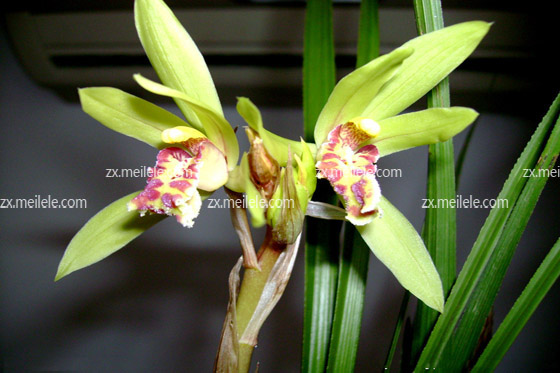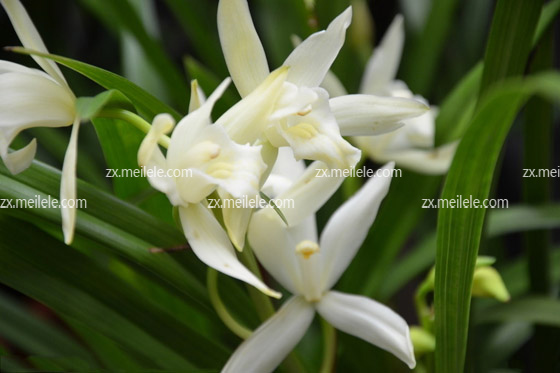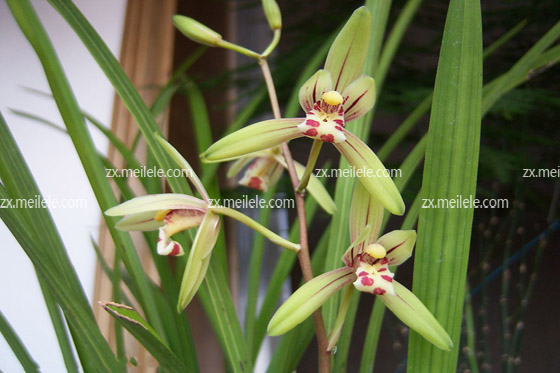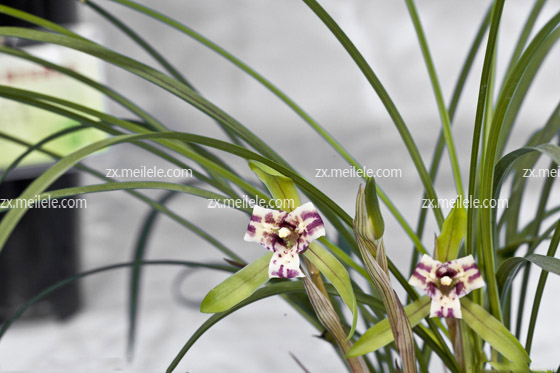A complete collection of culture methods and matters needing attention of bluegrass
Orchid, also known as orchid, belongs to the dicotyledonous plant of Orchidaceae and is a perennial herb. The leaves of bluegrass are clustered from the stems, and the leaves of linear lilies are evergreen all the year round. it is numerous and uncluttered, prostrate and elegant. Its flowers are plain but not gaudy, graceful and graceful, and are very popular with people. Today, if you like, let's take a look at the introduction of bluegrass culture methods and matters needing attention with the editor.

Different pots of culture methods of bluegrass
Generally, bluegrass should be cultured in separate pots once every 2-3 years, in March-April of each year, or in the middle of October-November. When pots are divided, the soil should be drier. If it is wet mud, it is inconvenient to operate and it is easy to break its roots and hurt them. After the mother plant is turned out, gently remove the mud, wipe according to the natural plant, trim the abortive roots and leaves, and be careful not to touch the leaf buds and fleshy roots. Then wash the root with clean water, put it in the shade, and wait for the root color to be white and dry before it can be split on the basin. If the weather is getting wet, bluegrass must be exposed to the sun for about 10 minutes, which is conducive to the growth of bluegrass.

Soil selection of culture methods of bluegrass
When bluegrass is planted, its soil should be slightly acidic, and the planted flowerpot had better use tile mud pot or Yixing mud pot, which is beneficial to the air root of bluegrass in the plant flowerpot. When planting, it is necessary to cover the basin bottom hole with clam shells, brown slices, etc., and add coarse sand, cinder and charcoal to form steamed bread, accounting for about 1 inch of capacity. The cultivated soil is about 3-5 cm thick. Then put the bluegrass into the basin, arrange the roots densely, add the fine soil to 2cm from the basin, lift the orchid plant slightly, and the height is flush with the soil surface at the top of the pseudobulb, not too shallow or too deep.

Watering of the culture method of bluegrass
When planting, it is very important to properly water the bluegrass. When watering it, use clean and slightly acidic water to water the bluegrass. Watering varies from plant to plant. The loose mud contains enough water, and the granular soil with stone-bearing volcanic stone absorbs enough water, but it does not accumulate water. After different plants are watered once, it is necessary to see the dryness of the basin soil, and the plant material is about one centimeter to whiten. During the breeding period, in order to improve the air humidity of bluegrass, the moisture of some rich plant materials can be added in the basin to keep bluegrass and pseudobulbs moist to a certain extent. When the whole basin is not dry, it must be watered thoroughly.

Fertilization of culture methods of bluegrass
In order to better promote the growth of bluegrass, it is very important to apply fertilizer to it. When fertilizing it, organic fertilizer can be used. And organic fertilizer, that is, farm manure should be sparse, which can be applied every ten days. If other inorganic fertilizers are used, they need to be used according to its instructions. Ramen grass can apply foliar fertilizer outside its roots during the growing period. When turning the basin and changing the soil, its base fertilizer is very important, but the fertilizer can not touch the root of bluegrass, and an appropriate amount of base fertilizer can be added to the soil. if there is too much fertilizer, it will lead to burn orchid roots and black spots. if you fertilize properly, you can produce strong seedlings and blossoms. When fertilizing bluegrass, it is required that the amount is small, clear and thin, and the principle of thin fertilizer and diligent application should be achieved.

Matters needing attention in the culture method of bluegrass
1. When the potted soil of bluegrass is dry and the watering time is prolonged, the tip of the orchid leaf is often scorched, this phenomenon is also a sign that it can be watered, but it is too late, because the orchid leaf is hurt because of thirst, the injury can not be cured.
2. When it is not from spring to early summer, the climate is relatively dry. You must water more when watering, and more when it is dry after autumn, and less when it is rainy in summer. Be sure to water more on days with strong hot wind and less on days with frequent wet winds.
3. Bluegrass is a light-loving plant, but strong light should be avoided when lighting, so it is necessary to shade according to its growth habits, and the amount of shading can be up to 70%.
4. Bluegrass is a light-loving plant, but it does not mean that it does not need sunlight. If it grows in a dark place for a long time, its organic matter accumulation is limited and can not meet the needs of growth, which will affect flower bud differentiation. Naturally, there will be no flowers or few flowers in the coming year.
5. If shell insects and other pests are found in bluegrass, they can be sprayed according to the instructions by oxidizing or killing enemies, preferably mixed, 2 or 4 times a year. During its growing period, it can be treated and prevented regularly every 15-20 days. If the bluegrass cultivated at home has rotten cocci disease, remove this bluegrass in time, because this disease is a terminal disease in bluegrass and can be cured without harm.

Conclusion: the above is the introduction of the breeding methods and matters needing attention of bluegrass brought by the editor. After reading the introduction of the editor, I believe we all have a certain understanding. Bluegrass is a unique style of flowers, its ornamental value is very high. The flower color is light and elegant, the flower fragrance is clear but not turbid, a pot is in the room, the fragrance is overflowing. Be sure to water more when watering, more watering when dry after autumn, and less watering in rainy summer. Be sure to water more on days with strong hot wind and less on days with frequent wet winds.
3. Bluegrass is a light-loving plant, but strong light should be avoided when lighting, so it is necessary to shade according to its growth habits, and the amount of shading can be up to 70%.
4. Bluegrass is a light-loving plant, but it does not mean that it does not need sunlight. If it grows in a dark place for a long time, its organic matter accumulation is limited and can not meet the needs of growth, which will affect flower bud differentiation. Naturally, there will be no flowers or few flowers in the coming year.
5. If shell insects and other pests are found in bluegrass, they can be sprayed according to the instructions by oxidizing or killing enemies, preferably mixed, 2 or 4 times a year. During its growing period, it can be treated and prevented regularly every 15-20 days. If the bluegrass cultivated at home has rotten cocci disease, remove this bluegrass in time, because this disease is a terminal disease in bluegrass and can be cured without harm.

Conclusion: the above is the introduction of the breeding methods and matters needing attention of bluegrass brought by the editor. After reading the introduction of the editor, I believe we all have a certain understanding. Bluegrass is a unique style of flowers, its ornamental value is very high. The flower color is light and elegant, the flower fragrance is clear but not turbid, a pot is in the room, the fragrance is overflowing.
- Prev

[characteristics of mimosa] introduction to the function and appearance of mimosa
[characteristics of mimosa] introduction to the function and appearance of mimosa
- Next

Pictures of rich bamboo in Phnom Penh, how to raise rich bamboo in Phnom Penh
Pictures of rich bamboo in Phnom Penh, how to raise rich bamboo in Phnom Penh
Related
- Wuhan Hospital Iron Tree Blooming Result Was Instantly Frightened by the Gardener Master
- Which variety of camellia is the most fragrant and best? Which one do you like best?
- What is the small blue coat, the breeding methods and matters needing attention of the succulent plant
- Dormancy time and maintenance management of succulent plants during dormancy
- Minas succulent how to raise, Minas succulent plant pictures
- What are the varieties of winter succulent plants
- How to raise succulent plants in twelve rolls? let's take a look at some experience of breeding twelve rolls.
- Attention should be paid to water control for succulent plants during dormant period (winter and summer)
- Watering experience of twelve rolls of succulent plants
- Techniques for fertilizing succulent plants. An article will let you know how to fertilize succulent plants.

